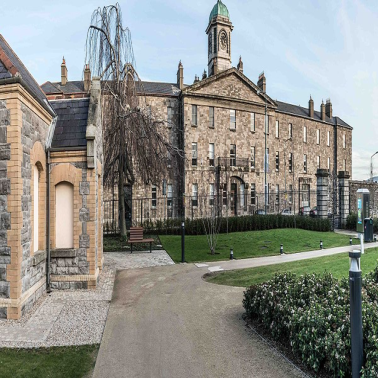Getting Started with Research “Beginning: Defining a Research Question and Preparing a research Plan”.
Abstract
Research is the lifeblood of medicine with innovations being made in the different technologies used to diagnose and/or screen for the presence of disease or to deliver treatments with higher efficacy. Scientific publication is the network of vessels which delivers the lifeblood. The outputs of research provide us with tomorrow’s medicine. In this series of articles, we will be discussing the different aspects of carrying out research from the conception of the research idea to publication in a peer-reviewed journal with the cycle repeating again with new research ideas emerging from the research conducted.
Introduction
The first question a person might ask about “research” is “What is research?” You will be familiar with what research is, as we are presented with research findings in media reports and clinical journals on new medical treatments or the consequences of research findings may affect you directly through changes in work practices if a study in your clinical area deems it necessary. Leedy and Ormrod [1], who are educational writers, suggest “research” is “a systematic process of collecting, analyzing, and interpreting information (data) in order to increase our understanding of the phenomenon about which we are interested or concerned.” The UK Department of Health defines research as “a structured activity which is intended to provide new knowledge which is generalisable (i.e. of value to others in a similar situation) and intended for wider dissemination.”[2] The main feature of the research is that it involves a planned, systematic and repeatable approach to test a theory or hypothesis or to further our understanding of a topic either through physical or theoretical models; we will explore this further in the next section dealing with the research process. The second question a person might ask regarding “research” is “Why do research?” For most people, the motivation to carry out research may be due to the requirements if an academic qualification such as a Master’s degree, or a PhD degree is being pursued, while for others carrying out research as part of their work and the PhD is just the beginning [3].
- Overview of the Process of Identifying a suitable Research Question and Plan
- Developing a research idea – define the question, form the hypothesis
Literature Review
A literature review offers an overview of the relevant and significant literature related to a research area. It should involve a review of the critical points of current knowledge on a particular topic – i.e. a survey of articles, books, conference papers, theses etc. It allows the researcher to place each piece of work in the context of its contribution to the understanding of the research area under review. It provides an opportunity for the research to determine the relationship of each piece of work to the others under consideration and resolve conflicts amongst seemingly contradictory previous studies. But most importantly it allows researchers to identify areas of prior scholarship to prevent duplication of effort and points the way forward for further research. There are a number of approaches to identifying the pertinent literature to the research area under investigation the first approach may be to use literature databases such as PUBMED, WEB of KNOWLEDGE CINAHL, Scopus, Science Direct and GOOGLE Scholar.
On the other hand, if you have a good paper on the research area you can use this to search (1) backward by using the list of references in the paper and (2) forward by investigating if it has been cited by other research groups. This will yield information regarding what type of research has been conducted and disseminated as a research publication around the research topic under investigation.
Developing the Research Plan
The next step is to develop a research plan and design the study which involves selecting the most appropriate methods which the review of the scientific literature should have helped to identify. In order to carry out these methods what equipment should be used, this should be decided based on the efficacy of the equipment, “Is it suitable or fit for the task?”, “Will it produce reliable and reproducible data?” Once the equipment has been identified you will need to determine do you have access to such equipment and if the access to this equipment is limited can you negotiate more time using this equipment or do you need to pay to use this equipment and so do you need to apply for funding to cover the cost of accessing this equipment. Next, you will need to decide the most appropriate study population namely what patient groups will be included in the study and is a control group required? It is often useful at this design stage of the project to seek advice from a statistician to determine the number of subjects necessary to reach statistical significance in the study and thus obtain meaningful results from the study. Remember to keep an eye on ethical issues such as research involving humans or animals and obtain ethics permission well in advance. Ethics applications often require you to have carried out Statistical Analysis such as Power Calculations, to determine the number of subjects to include in the study.
Sources:
- Leedy PD and Ormrod JE, Practical Research – Planning and Design. Ninth Edition Pearson Education, Inc., publishing as Merrill, UpperSaddle River, New Jersey 07458
- www.dhsspsni.gov.uk/research_governance_framework.pdf Last checked 04/03/2013
- Blaxter L, Hughes C and Tight M, How to research. Third Edition Open University Press, Buckingham. ISBN 0 335 19452 4 (pb)
- https://arrow.tudublin.ie/cgi/viewcontent.cgi?article=1048&context=scschphyart


